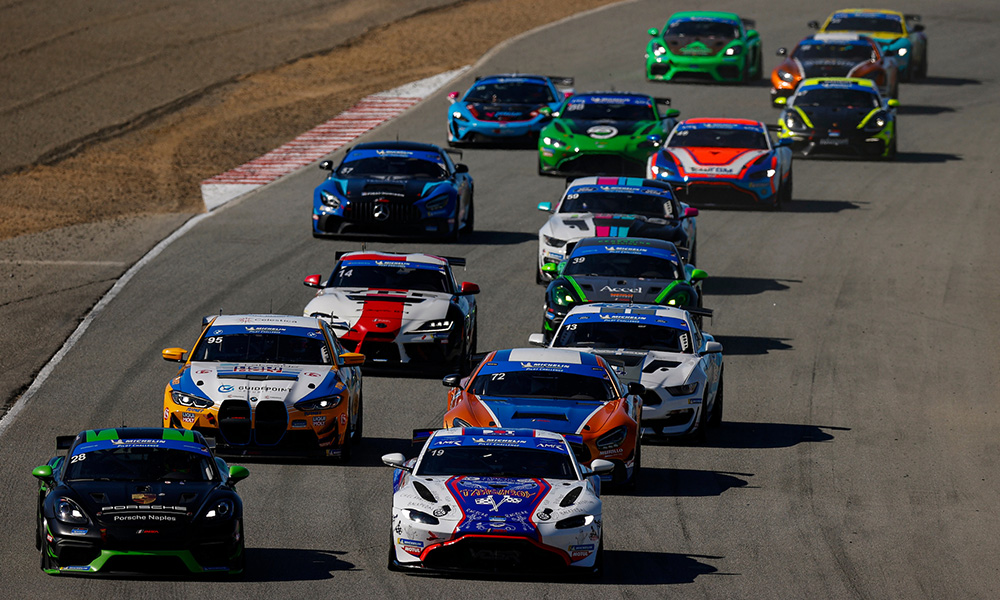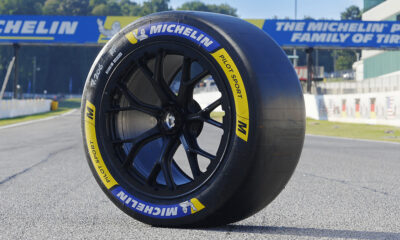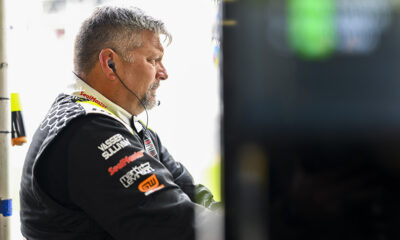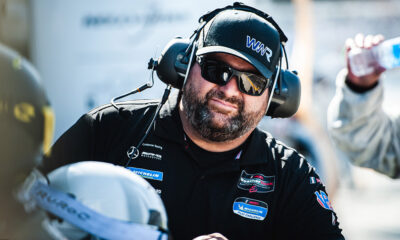
Photo: Jake Galstad/IMSA
The cars of the IMSA Michelin Pilot Challenge Grand Sport class will fittingly have the honors of being the first cars on track Friday morning to inaugurate
the new Detroit Grand Prix circuit in downtown Detroit.
John Watson started 17th but worked through the field to take a Michelin-fitted McLaren Ford to victory in the inaugural Detroit Grand Prix Formula 1 race in 1982. Michelin earned a second Detroit win downtown when pole winner Nelson Piquet drove his Brabham BMW to victory in 1984.
As the GT4-homologated GS class cars from eight manufacturers race along Jefferson Avenue, down Bates Street, and up Rivard Street, they become part of Michelin’s continuous process of taking innovative technologies from the track to the street.
If the new 1.7-mile downtown Detroit temporary street circuit represents one extreme, another is found 560 miles north in the Upper Peninsula, where Michelin conducts its winter tire testing in Houghton, Mich.
Meanwhile, across the Atlantic and 4,000 miles east of Detroit, Michelin will be on track in France this weekend as it prepares for the Centennial anniversary of the 24 Hours of Le Mans.
Ironically, Michelin also won the first race at Le Mans in 1923 and has taken the overall race wins in each of the past 25 consecutive years.
This will be the first Pilot Challenge Detroit race, as many of the IMSA WeatherTech SportsCar Championship GTP and GT cars, teams, and drivers take part in the sole official test day at Le Mans on Sunday.
“It seems like a perfect circle that the Pilot Challenge GS cars from so many manufacturers, including Chevrolet and Ford are racing on the streets in Detroit, literally around the General Motors headquarters,” said Jason Anzalone, director of motorsports, Michelin North America.
The GS cars will race on the highly successful and commercially available Michelin S9M tires from the ultra-successful Michelin Pilot family of performance tires.
“Everything that we learn on the tracks like Le Mans, in the snow at Houghton and on the streets and roads around the world everyday flows into our technical centers. We use these touchpoints to develop tires for the street, the highway, our customers and consumers,” said Anzalone.
Michelin expects that the new track surface and grip level will evolve from the first session on Friday morning, through the midday second practice and qualifying Friday evening and into the race late Saturday afternoon, making chassis set-ups and tire strategies important.
The Pilot Challenge GS teams are expected to split the 100-minute race roughly in half, with a single refueling pit stop and driver change.
Tire options may include changing four tires or two, or even following the Porsche Penske 963 race winning strategy in Long Beach by doing the entire race on a single set of tires.

























